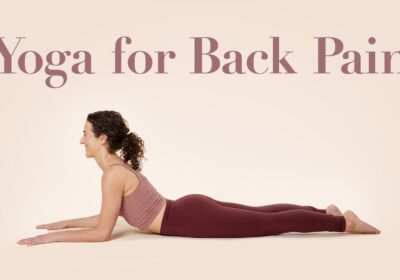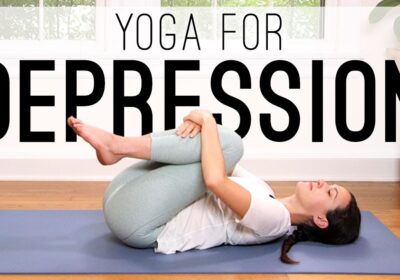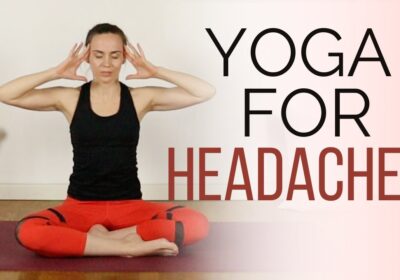Yoga for Anxiety Disorders

Summary:
- Yoga, though largely considered good for patients with anxiety disorders, has not been studied well through research. Preliminary evidence is in favour of yoga, and yoga-based soothing practices have already made their way to modern psychiatry curriculum.
- Yoga practices useful for patients with anxiety disorders are supposed to be essentially soothing or calming down in nature, though the need of mild stimulation cannot be undermined especially in cases where patients find it difficult to focus on soothing practices.
In numerous research studies yoga has been shown to improve symptoms of anxiety, stress, and traumatic experiences and may be used as a complementary therapy to traditional medical treatment. Effectiveness of yoga has been studied for populations with symptoms of anxiety as well as for populations with diagnosed anxiety disorders.
Major components of yoga which can be utilized for the therapeutic benefits among patients with anxiety disorders are:
- Breath awareness: This practice involves focusing on the breath and bringing attention to the sensation of inhaling and exhaling. This can help to reduce anxiety by calming down the mind and promoting a sense of relaxation.
- Yoga nidra: Also known as “yogic sleep,” this practice involves lying down in a comfortable position and guided through a series of visualizations and body sensations. It can help to release tension and promote a deep sense of relaxation.
- Restorative yoga: This practice ensures rejuvenation or restores health by inducing relaxation through practice of yoga postures and reduces feelings of anxiety. It frequently involves use of props such as blankets, bolsters and blocks to support the body in different poses.
- Asana practice: Certain yoga poses, such as savasana, makarasana, sukhasana can help to release physical tension and promote a feeling of calm.
- Mindfulness meditation: This practice involves bringing attention to the present moment and observing thoughts and sensations without judgement. It can help reduce anxiety by promoting a sense of calmness and self-awareness.
- Pranayama: It involves controlling the breath to promote relaxation and balance. It can help to reduce anxiety in view of its balancing nature and promoting a sense of peace.
There are certain practices which can do harm instead of benefits for patients with anxiety disorders. These are:
- Inversions: Posses such as headstands and handstands can trigger feelings of dizziness in healthy individuals and more so among patients with anxiety disorders.
- Pranayama: Certain fast breathing practices like bhastrika and mukha dhauti can increase feelings of panic and anxiety in some individuals.
- Hot yoga: High temperature and humidity in hot yoga classes can exacerbate symptoms of anxiety in some individuals.
- Advanced practices: Majority of advanced practices like halasana, chakrasana, kumbhaka are a strict ‘no’ for patients with anxiety disorders.
- Dynamic sequences: Fast-paced sequences that involve a lot of movement and change can be overwhelming for individuals with anxiety disorders.
It is always important to listen to your body and communicate with your yoga teacher about any concerns and limitations you may have. Adapting or modifying poses, or finding alternative practices may be beneficial for individuals with anxiety disorders.
Following precautions should be taken by patients with anxiety disorders before initiating yoga practice.
- Start with gentle yoga poses and gradually increase intensity over time.
- Avoid practices that require deep breathing or hyperventilation.
- Inform the yoga instructor of your anxiety disorder and any triggers you may have.
- Avoid poses that may trigger feelings of claustrophobic or panic.
- Avoid all advanced postures and inversions.
- Practice yoga in a safe and comfortable environment.
- Take breaks as needed and listen to your body.
- Consult with a healthcare professional before starting a yoga practice, especially if you are on medication for anxiety disorder.
Yoga is believed to have a positive effect on patients with anxiety disorders through several mechanisms, including:
- Relaxation: Yoga practices such as breathing exercises and meditation promote relaxation, which can help reduce feelings of anxiety and stress.
- Mindfulness: Yoga practices help individuals become more aware of their thoughts and emotions, which can help them better manage their anxiety symptoms. Though this awareness can sometimes be troublesome to patients and hence medical supervision is mandatory before initiating any practices.
- Exercise effect: Yoga practices such as asana and pranayama can help improve overall physical health and reduce anxiety symptoms through the release of endorphins, the body’s natural feel-good chemicals.
- Cognitive reframing: Yoga practices such as mindfulness and meditation can help individuals develop a different perspective on their thoughts and emotions, which can help them break negative thought patterns associated with anxiety disorders.
Though benefit of yoga has been identified for patients with anxiety disorders, but there are certain limitations in the use of yoga as a therapy for this particular population:
- Limited research: There is limited research on the effectiveness of yoga therapy for patients with different anxiety disorders, making it difficult to fully understand its potential benefits and limitations.
- Individual differences: Yoga therapy may not be suitable for all patients with anxiety disorders as it may not address specific symptoms or be appropriate for certain individuals with physical and cognitive limitations.
- Compliance: Regular practice and adherence to a yoga therapy program can be challenging for some patients, especially those with severe anxiety symptoms.
- Complementary therapy: Yoga therapy can be used as a standalone treatment or complementary therapy in conjunction with other treatment methods such as medication or therapy. Though its potential as a standalone treatment is yet to be established and also determined by the type and severity of anxiety disorder.
- Limited accessibility: Access to qualified yoga therapists may be limited in some areas, making it difficult for some patients to access yoga therapy as a treatment option.
- Cost: Yoga therapy can be costly and not all patients may be able to afford the cost of regular sessions.
- Unrealistic expectations: Yoga therapy may or may not provide immediate and complete relief for anxiety symptoms and patients may have unrealistic expectations about its effectiveness.
It is important to note that yoga should not be used as a replacement for medical treatment, and individuals with anxiety disorders should consult with a healthcare professional before starting a yoga practice.
Related Posts

Yoga for Back pain
Summary: Yoga can be used as both an add-on treatment and as a monotherapy for…

Yoga for Depression
Summary: Yoga can be used as both an add-on treatment and as a monotherapy for…

Yoga for Headache
Summary: Yoga can be used as both an add-on treatment and as a monotherapy for…

Leave a Reply